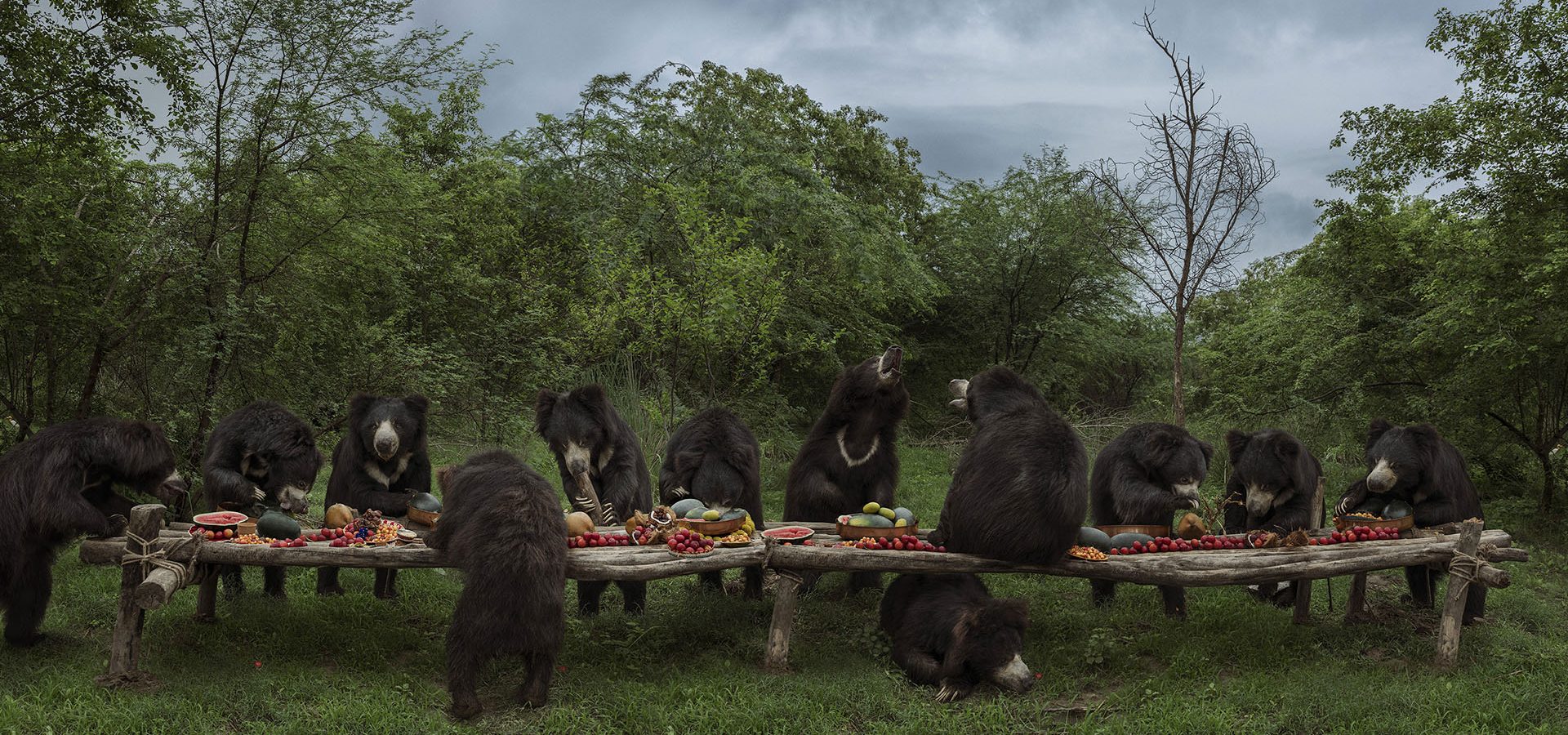Author Andrew Smith once said, “People fear what they don’t understand and hate what they can’t conquer.” The paucity of research surrounding the Sloth Bear has made this bear species a feared enigma. Some call it the “world’s deadliest bear” owing to increasing incidents of human-Sloth bear conflict, while others continue to poach the bear for use in entertainment or traditional medicine.
Determined to conserve this unique bear species and their habitat, Wildlife SOS in collaboration with the IUCN Sloth Bear Expert Team is declaring 12th October as World Sloth Bear Day. This year will be the first inaugural World Sloth Bear Day highlighting the dire need for research, conservation and protection efforts for Sloth bears. To commemorate this occasion, Wildlife SOS has invited dignitaries from all government agencies, wildlife organisations and educational institutions to commemorate the day and make a commitment to preserving Sloth bears.
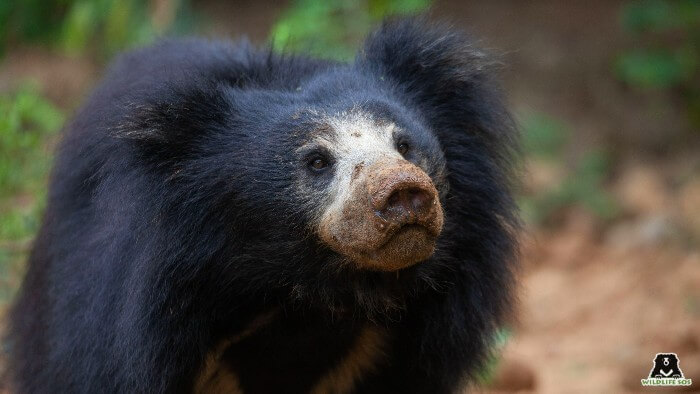
Known as the ‘least researched’ bear species, the mystery surrounding Sloth bears only hinders their conservation. Fighting a long uphill battle for survival due to habitat loss, habitat degradation, human-bear conflict and poaching, the Sloth bear is listed as ‘Vulnerable’ on the IUCN Red List. With only 6,000 to 11,000 Sloth Bears left in the wild, we must begin re-writing the story of the Sloth bear.
There is a lot to be learned about this unique bear known for its shaggy coat, long claws and whitish Y or V-shaped patch on the chest. Their long claws help them dig up termite mounds and ant hills which sometimes are rock hard. Utilizing their long lower lip they can easily suck out a large number of insects. Their diet, which primarily consists of termites, fruits and tubers, maintains the health of a forest, making Sloth bears a keystone species.
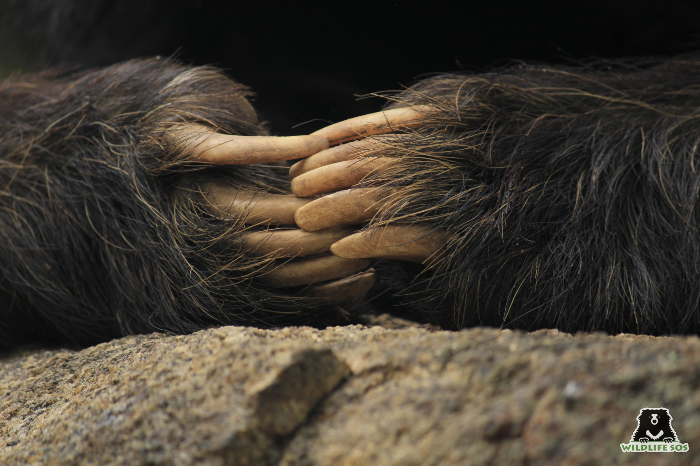
Presently Sloth bears are only found in the Indian subcontinent, Nepal and a sub-species in Sri Lanka. In India, these bears have existed for over two and a half million years and have become a part of the history of the land. During the time of empires, Sloth bears were poached from the wild and used as entertainment for great kings and rulers. The Kalandars, a nomadic community that tamed Sloth bears for a living, would poke a hot iron poker through the muzzle of a bear. A coarse rope was then tied around this wound. When the rope was pulled, the Sloth bear would get up on its hind legs in agony – an act interpreted as dancing.
This archaic practice carried on into modern times. Streets in India would be punctuated with Kalandars walking with Sloth bears to provide roadside entertainment. These bears were poached from the wild as cubs and their mothers were killed. As the practice of dancing bears continued, the number of Sloth bears in the wild began rapidly dwindling. As of 1996, our research indicated that there were more than 1200 ‘dancing’ bears scattered throughout the country.
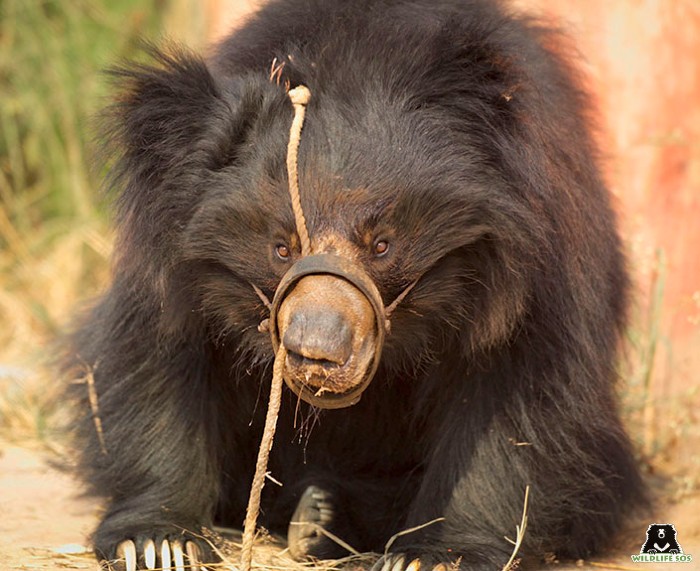
To conserve the population of Sloth bears in India, the dancing bear practice had to be stopped. The co-founders of Wildlife SOS, Kartick Satyanarayan and Geeta Seshamani worked with Government officials to conserve Sloth bears. We were able to rescue over 620 dancing bears. These bears were rehabilitated at our rescue centres, including the Agra Bear Rescue Facility which is the world’s largest Sloth bear centre. At the Wildlife SOS Bear rescue centres, Sloth bears were given the life of dignity and freedom that was taken away from them. They received the veterinary care they needed including dental procedures, X-rays, and a specially curated diet plan. Moreover, their lush green enclosures provided them with a home as close to their natural habitat as possible.
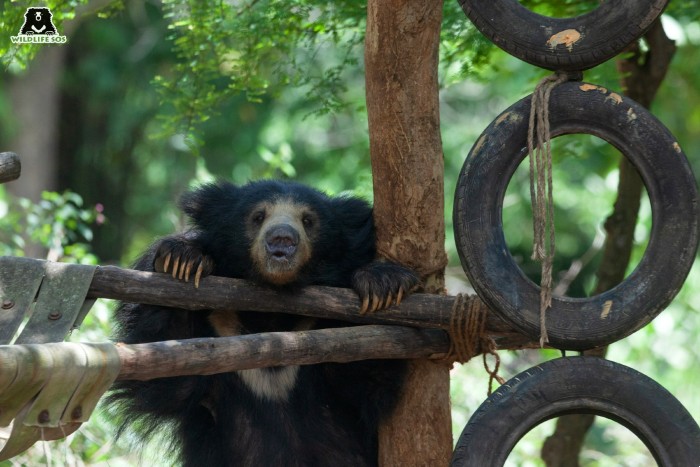
To ensure the Kalandar community did not fall back on poaching wild animals for a living, Wildlife SOS worked with the Kalandars to provide them with alternative forms of livelihood and access to education. Over 3000 families have been provided with alternative livelihoods and over 8000 Kalandar children have been assisted with education support.
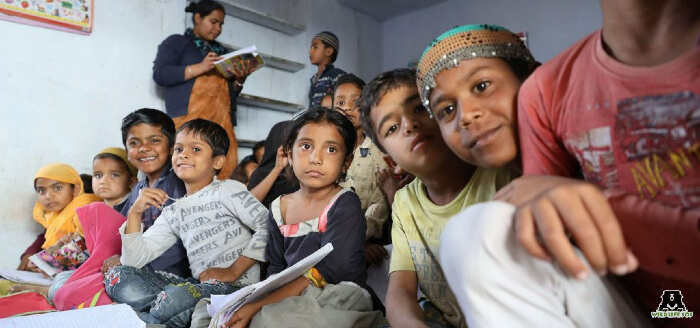
Today, seeing Sloth bears being used as roadside entertainment in India is a thing of the past. Yet, their populations continue to face other threats. Due to habitat degradation, human sloth bear conflict is rapidly increasing. Over thousands of humans get mauled in unexpected counters by sloth bears. Such incidences also lead to retaliatory killings wherein numerous sloth bears are harmed. Various anthropogenic risks also continue looming over their heads such as linear intrusions, snares, and even open wells. The recent extirpation of sloth bears in Bangladesh points towards the pressing need to conserve these species.
In a first of its kind research initiative to conserve this unique bear species bears in India, Wildlife SOS initiated a study in 2014, focussing on the ecology and denning patterns of wild Sloth bears in the state of Karnataka. This is a step forward for wildlife veterinary studies as not much research has been conducted to observe and understand the physiology and natural behavioural patterns of Sloth bears. Additionally, our research team recently published a study on sloth bears that have fallen victim to anthropogenic risks in the state of Karnataka. Wildlife SOS’ also launched a public awareness film called “Living with Sloth bears” which aims to educate local communities living in sloth bear-dominated regions about conflict mitigation and co-existence. The film is a joint initiative of Wildlife SOS and the Karnataka Forest Department.
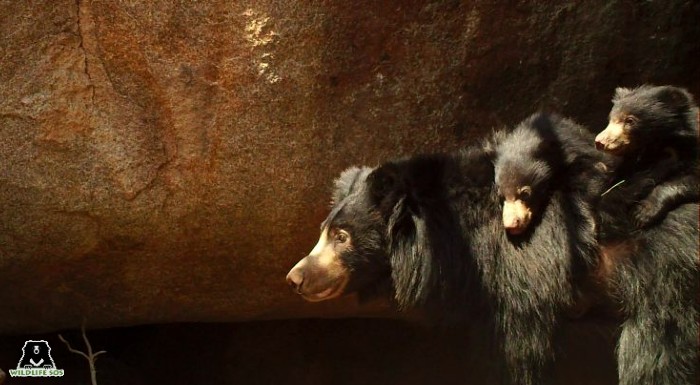
Through the declaration of World Sloth Bear Day, we aim to set precedence for the rest of the world to promote the conservation of sloth bears and their habitats throughout their distribution range. We hope this day is a rallying call for citizens of the world to fight for the conservation of sloth bears. Above all, this day is our touching point to work all year round to ensure that we never see an India without Sloth bears.
To learn more about the upcoming inaugural World Sloth Bear Day event subscribe to our newsletter

